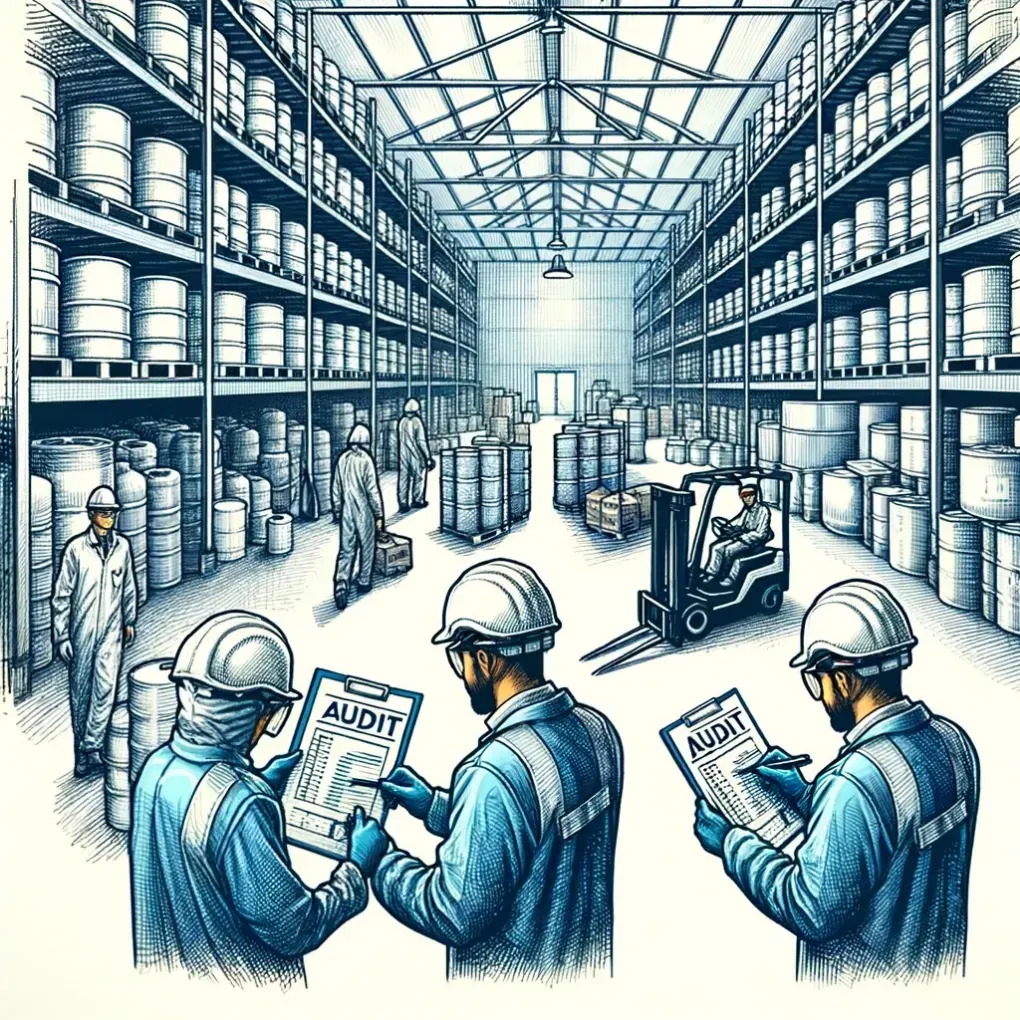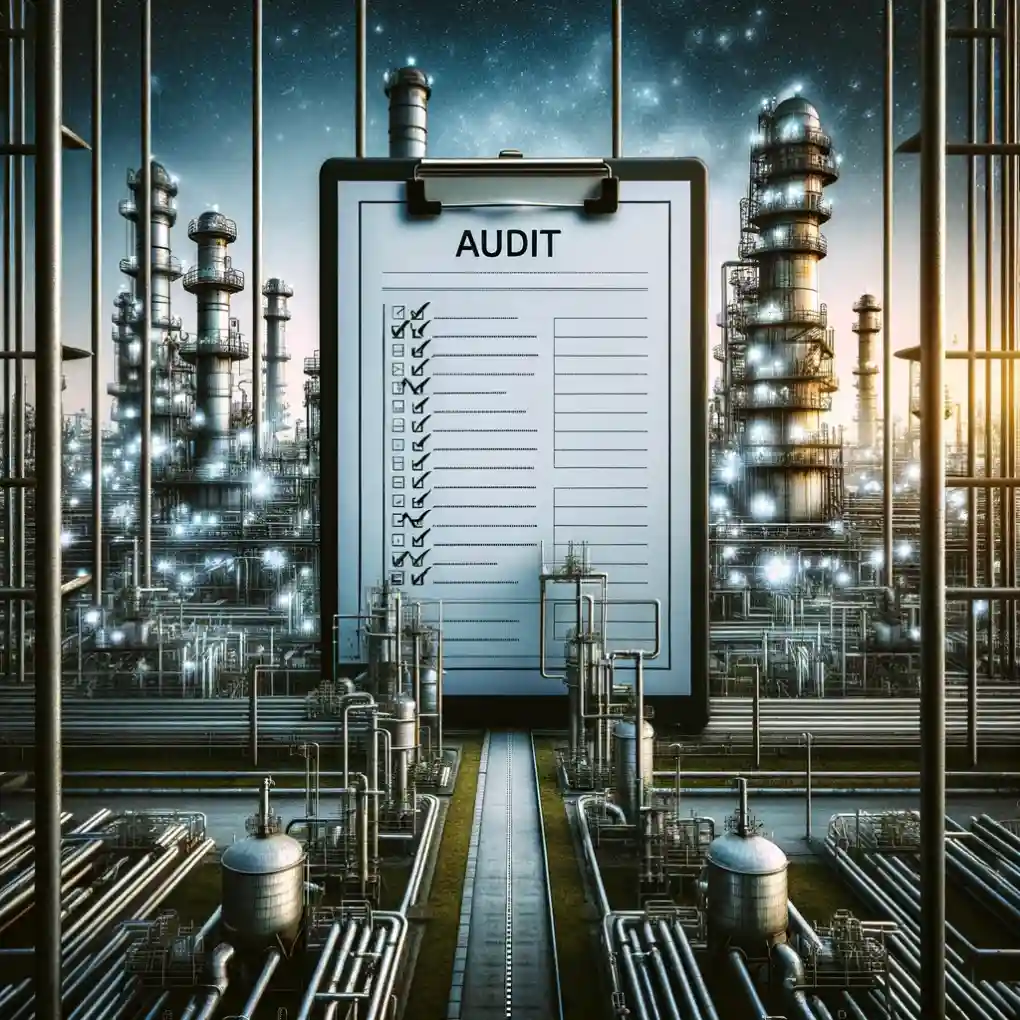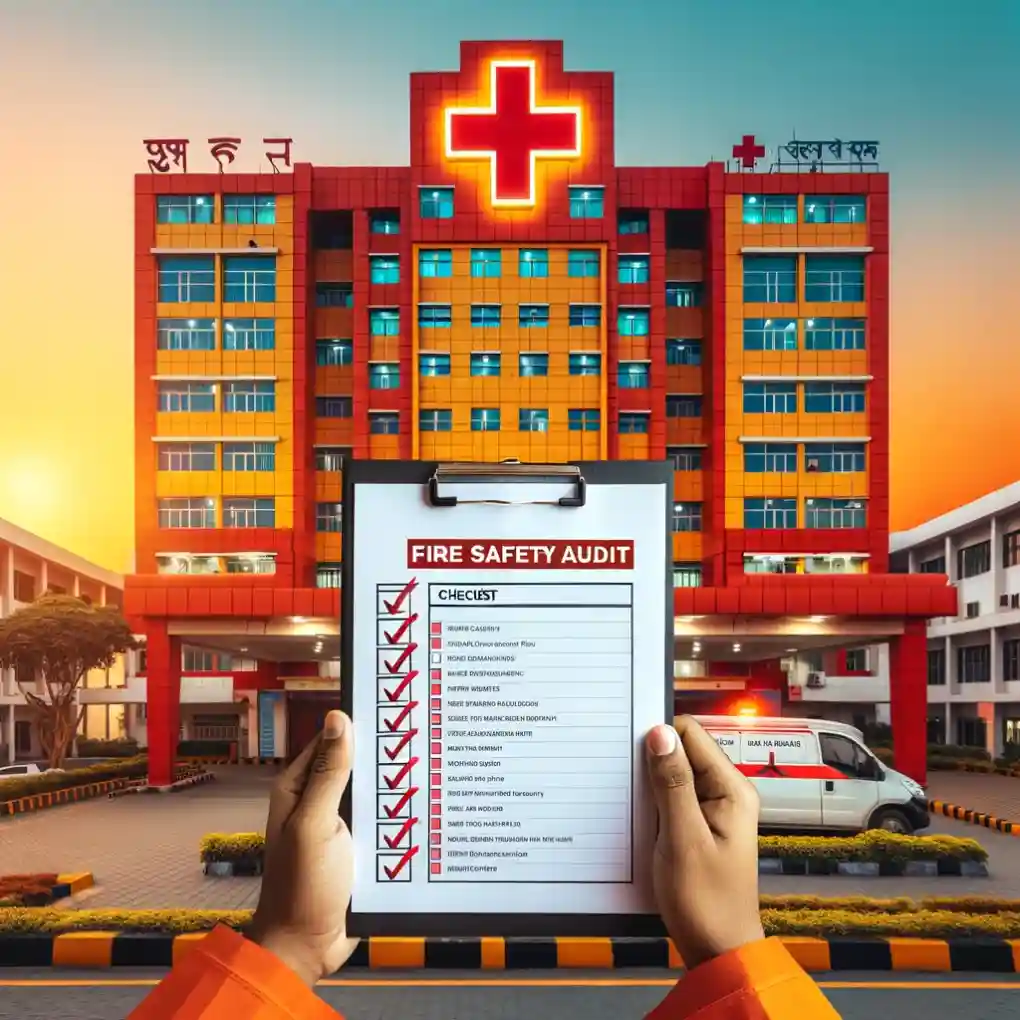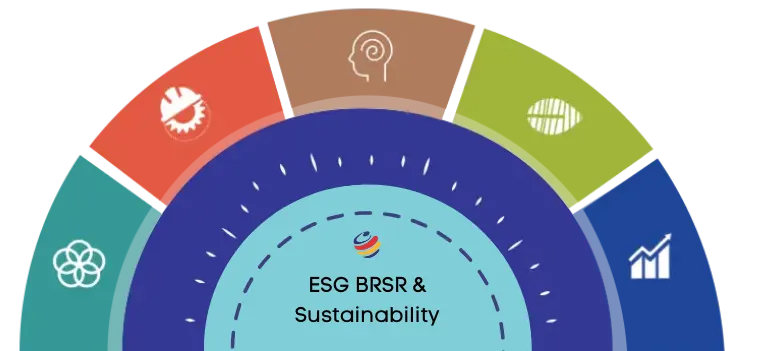External Fire and Safety Audits help creating and maintaining a secure workplace, that is at the forefront of organisational priorities. Beyond meeting regulatory obligations, preparing for a fire safety audit presents a unique opportunity to reinforce your organisation against potential fire hazards.
In this comprehensive guide, we embark on a detailed exploration of the steps involved in readying your organisation for a successful fire audit.
Our aim is not merely compliance; it’s a genuine commitment to ensuring the safety and well-being of everyone within your organisation.
As we unfold this step-by-step blueprint, our focus is tailored specifically for auditee organisations anticipating an audit from a third-party audit firm.
Let’s delve into the intricacies of preparation, equipping you with the knowledge and insights necessary for a seamless and successful fire safety audit experience.
What you will find here
Step 1: Define the purpose of the fire and safety audit
The first step is to understand the purpose of the audit and to get the answer to the question – why is it needed?
Generally, a fire safety audit is conducted to ensure that the workplace (maybe a manufacturing unit, high-rise commercial building or a warehouse) is safe from fire hazards and that the occupants are protected in case of a fire.
The following examples illustrate this point clearly.
2012 Dhaka Garment Factory Fire:
In 2012, a devastating fire broke out in a garment factory in Dhaka, Bangladesh.
The tragedy, which resulted in the loss of over a hundred lives, was a stark reminder of the importance of fire safety audits in manufacturing units.
Investigations revealed that poor fire safety measures, such as inadequate fire exits and lack of proper fire extinguishing equipment, were the main contributors to the disaster.
This incident underscores the need for thorough fire safety audits in manufacturing facilities to identify and rectify such life-threatening deficiencies.
Grenfell Tower Fire, London, 2017:
The Grenfell Tower fire in London, which claimed 72 lives, highlighted the importance of fire safety audits in residential buildings, especially high-rises.
The fire’s rapid spread was largely attributed to the building’s cladding, which failed to comply with fire safety standards.
This tragic event illustrates how a comprehensive fire safety audit could potentially identify risks like flammable cladding, leading to necessary corrective actions and the prevention of such disasters.
The audit will identify any potential fire hazards and recommend corrective actions.
Step 2: Identify the scope of the fire and safety audit
The next step is to identify the scope of the audit. This includes identifying the areas of the entity or unit that will be audited, the type of audit that will be conducted, and the time frame for the audit. Take a look at the following instances.
2010 Shanghai World Financial Center Fire Audit:
Following a minor fire incident, the management of Shanghai World Financial Center, one of the world’s tallest buildings, conducted a comprehensive fire safety audit.
The scope of this audit included an assessment of fire detection and alarm systems, evaluation of fire exits and escape routes, and inspection of fire suppression systems throughout the building.
This thorough approach ensured that every critical aspect of fire safety was covered, leading to significant improvements in the building’s fire safety standards.
Boeing Facility Fire Safety Audits:
Boeing, the aerospace giant, regularly conducts fire safety audits across its facilities. These audits focus on areas such as aircraft manufacturing hangars, storage areas for flammable materials, and office spaces.
By clearly defining the scope to include diverse areas within its facilities, Boeing ensures a comprehensive evaluation of its fire safety measures.
It’s therefore important to communicate with the third-party audit firm to ensure that everyone is on the same page.
Step 3: Prepare for the audit
Once the scope of the audit has been identified, it’s time to prepare for the third party fire safety audit.
This includes reviewing the unit’s fire safety plan, ensuring that all fire safety equipment is in good working condition, and training employees on fire safety procedures.
It’s important to keep detailed records of all fire safety activities.
Understand the Regulatory Landscape
Before diving into preparations, it’s crucial to understand the relevant fire safety regulations that apply to your industry and location.
Familiarise yourself with local, state, and federal requirements, and ensure that your organisation complies with all necessary standards. This foundation is essential for a successful audit.
Formulate a Core Fire Safety Team within the organisation
Establish a cross functional team responsible for overseeing the fire and safety audit or fire audit preparations.
This team should include representatives from various departments, including facilities management, human resources, and health and safety.
Assign clear roles and responsibilities to each team member, creating a collaborative and coordinated effort.
Train Employees on Fire Safety
A well-trained workforce is your first line of defence against fire hazards.
Provide comprehensive training on fire safety, including the proper use of firefighting equipment, recognition of potential hazards, and evacuation procedures.
Regularly refresh this training to keep employees informed and prepared.
Conduct a Pre-Audit Self-Assessment
Before the official audit, conduct a thorough self-assessment to identify potential areas of improvement. Review previous audit reports, if available, and address any unresolved issues.
This proactive approach allows you to identify and rectify potential deficiencies before the formal audit takes place.
Develop a Comprehensive Fire Safety Plan
Develop or update your organisation’s fire safety plan. This document should outline activities during normal situations as well as emergency situations.
This plan includes procedures, emergency evacuation routes, and the roles and responsibilities of employees during a fire incident.
Ensure that the plan is easily accessible to all employees and regularly communicated to them.
Schedule Regular Fire Drills
Practice makes perfect, and regular fire drills are an excellent way to ensure that employees are familiar with evacuation procedures.
Schedule these drills at different times and under various scenarios to assess the effectiveness of your emergency response plan.
Use the feedback gathered during Emergency Response Team (ERT) Mock Drill to make necessary adjustments.
Document and Organise Fire Safety Records
Compile and organise all relevant safety records, including maintenance logs, training records, and emergency response drills.
It’s a good practice to maintain a Fire Safety Legal Register that contains the identification of requirements to relevant Fire Rules and Regulations and the compliance status.
Having these documents readily available for the audit demonstrates a commitment to transparency and compliance with safety regulations.
Step 4: Get the Fire audit conducted as per schedule
The audit will be conducted by a third-party fire safety audit firm who will assess and inspect the facility for fire hazards.
The auditor will look for things like risk assessment outcome, fire prevention measures, fire detection and control measures, operational control issues like blocked exits, improperly stored flammable materials, malfunctioning fire safety equipment and Emergency Response Plan.
Read the following examples to get a vivid picture of how such audits unfold in the real world.
Apple Park, Cupertino:
In 2017, Apple’s new headquarters, Apple Park in Cupertino, underwent a comprehensive fire safety audit before its inauguration.
The audit was conducted by an external firm and focused on the building’s state-of-the-art fire detection systems, the efficiency of its automatic sprinkler setup, and the adequacy of its emergency exits.
The audit also examined the building’s unique structural elements, like its curved glass panels, for fire safety compliance.
Apple’s proactive cooperation and transparency during the audit facilitated a thorough and effective safety evaluation, ensuring the futuristic campus met all fire safety standards.
London Heathrow Airport:
London Heathrow, one of the world’s busiest airports, regularly undergoes fire safety audits conducted by external auditors.
In one such audit, the focus was on assessing the fire safety measures in place in terminals, control towers, and hangar spaces. The auditors examined fire detection and alarm systems, emergency lighting, signage, and the efficiency of fire brigade response within the airport premises.
Heathrow Airport’s management team worked closely with the auditors, providing access to all necessary areas and documentation, which ensured a comprehensive assessment of the airport’s preparedness for fire emergencies.
It’s therefore important to be transparent and cooperative during the audit.
Step 5: Review the external fire and safety audit report
After the audit is complete, the third-party audit firm will provide a report that outlines the findings of the audit along with recommendations.
It’s important to review this report carefully and take corrective action on any issues that were identified. If there is any lack of clarity, discrepancies or disagreements, it’s important to communicate with the audit firm to resolve them.
The Boeing Company – Everett Factory:
In 2015, The Boeing Company’s Everett factory, the world’s largest building by volume, underwent a fire safety audit.
The subsequent report identified areas needing improvement, including enhancements in fire detection systems and emergency exit signage.
Boeing meticulously reviewed the report and not only addressed these issues but also conducted additional training for its staff.
This proactive approach helped Boeing to further bolster its fire safety measures, ensuring a safer working environment in one of the most critical manufacturing facilities in the aerospace sector.
Toronto General Hospital:
Toronto General Hospital, known for its high standards in patient care, is another example. Following a routine fire safety audit, the hospital received a report that highlighted the need for upgrading its fire doors and enhancing fire drill frequency.
The hospital administration carefully reviewed the report and worked closely with the auditors to understand the specifics of the recommendations.
Subsequently, they implemented these changes, thereby significantly improving the hospital’s fire safety standards. This included the installation of new fire doors and a revised schedule for more frequent and comprehensive fire drills.
Step 6: Implement corrective and preventive actions
The final step is to implement the corrective actions that were identified in the audit report.
This may include things like repairing or replacing fire safety equipment, updating the fire safety plan, or providing additional training to employees.
It’s important to keep detailed records of all corrective and preventive actions.
General Motors (GM) – Detroit Facility:
Following a fire safety audit at one of its Detroit manufacturing facilities, General Motors identified the need to upgrade its fire suppression systems, which were not fully covering all high-risk areas.
GM promptly implemented the recommended changes, which included the installation of additional sprinklers and fire alarms in critical areas. Additionally, GM conducted extensive employee training on new evacuation procedures.
These actions not only addressed the immediate issues identified in the audit but also strengthened the overall safety culture at the facility.
Marriott International – Downtown Chicago Hotel:
The Marriott hotel in downtown Chicago, after undergoing a fire safety audit, was advised to enhance its fire escape routes and emergency lighting systems.
The hotel management took immediate action to comply with these recommendations. They installed more visible and efficient emergency lighting and clearly marked additional escape routes.
Marriott also updated its fire safety plan to include these changes and conducted training sessions for all staff members, ensuring they were familiar with the new evacuation procedures.
This proactive response not only improved the safety of the guests and employees but also demonstrated Marriott’s commitment to maintaining high safety standards.
Step 7: Collaborate with External Experts
Now, you know the weaker links in the chain. Consider engaging external fire safety consulting firms to provide valuable insights and specialised solutions like Fire Load Calculation, Fire Risk Assessment, Fire Pre Plan, FLS Technical Due Diligence etc.
It ensures the resilience of your organisation against potential fire risks.
Google Data Centers:
Google, known for its state-of-the-art data centres, regularly collaborates with external fire safety experts to ensure the highest level of fire safety in its facilities.
For instance, in one of its data centres, Google engaged a specialised firm to conduct an extensive Fire Risk Assessment. The assessment led to the implementation of advanced fire detection and suppression systems, specifically designed to protect sensitive data equipment.
This collaboration has been instrumental in maintaining the integrity and safety of Google’s data centres, which are critical to the company’s operations.
Singapore Changi Airport:
Singapore Changi Airport, recognised as one of the world’s best airports, has consistently worked with external fire safety consultants to enhance its fire safety measures.
These experts provided comprehensive Fire Load Calculations and Fire Risk Assessments for the airport’s various terminals and critical infrastructure.
As a result, Changi Airport has implemented advanced fire safety systems, including automated fire detection and suppression systems, and robust fire response protocols.
This proactive approach has significantly contributed to the airport’s reputation for safety and operational excellence.
Continuous Improvement and Adaptation in Fire Safety
Fire safety risk management is an ongoing process. After the audit, use the findings to identify areas for improvement.
Develop a culture of continuous improvement, where feedback from audits is embraced as an opportunity to enhance safety measures and ensure the well-being of everyone in the organisation.
Conclusion
Preparing for a successful fire and safety audit is not just about ticking boxes; it’s about fostering a culture of safety within your organisation.
By following this step-by-step guide, you can ensure that your workplace is not only compliant with regulations but genuinely committed to the well-being of its occupants.
Remember, a proactive approach to fire safety not only safeguards lives but also contributes to the overall resilience and sustainability of your organisation.
Note: The information presented on this blog post is publicly available, and no confidential data has been disclosed.

Let's discuss
Share this post
Category: Blog
Tags: Audit, Safety, Fire Safety, Safety Audit
About Consultivo
Consultivo is a management advisory and consulting firm helping global businesses in the areas of Sustainability, Business Excellence & Risk Management – both in the strategic and operational levels.
The Consultivo research and analytics wing works on industry, society and community-oriented research programs on ESG, sustainability and business risk in both qualitative and quantitative fields.
Consultivo is a leading Fire and Life Safety Audit, Consulting and Advisory firm and provides the following solutions:
- Fire and Life Safety Consulting Solutions
- Fire and Life Safety Audits
- Fire Safety Audit for Manufacturing Units – Factories, Process Plants, Hazardous Plants
- Fire Safety Audit for High Rise Commercial Buildings – Offices, Hypermarkets, Hospitals, Hotels, Malls, Housing Societies
- Fire Safety Audits for Industrial Buildings like Warehouses, Depots, Retail Outlets, Sales & Service Centres etc
- Fire Risk Assessment and Fire Load Calculation
- Fire Pre-Plan
- Fire Installation Review Programme (FIRM) and Fire and Life Safety (FLS) Technical Due Diligence (TDD)
- Emergency Response Plan – ERDMP
- Fire Safety Training Programs
Empowering Safety, Ensuring Resilience: Consultivo’s Fire and Life Safety Consulting Solutions
Related insights
View more in Impact Stories | Blogs | Knowledge Bank | News and Events










